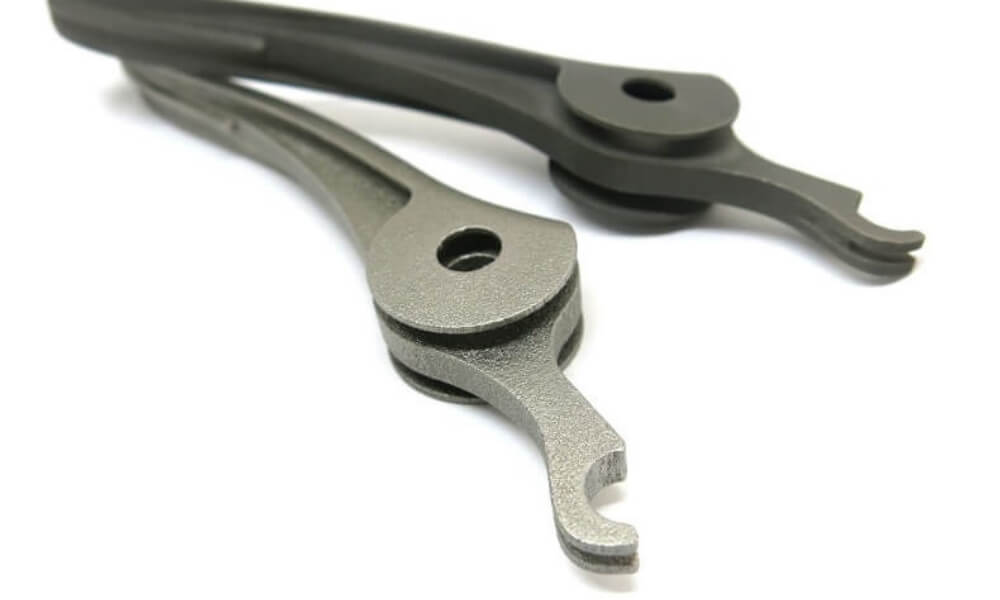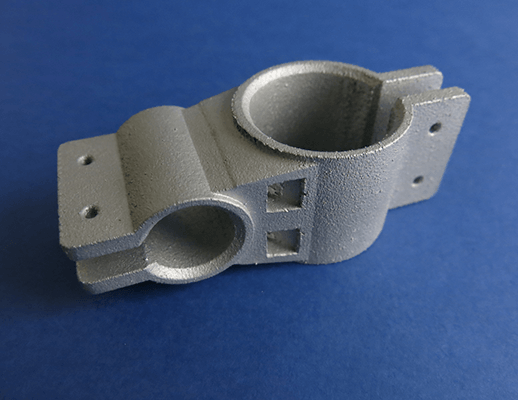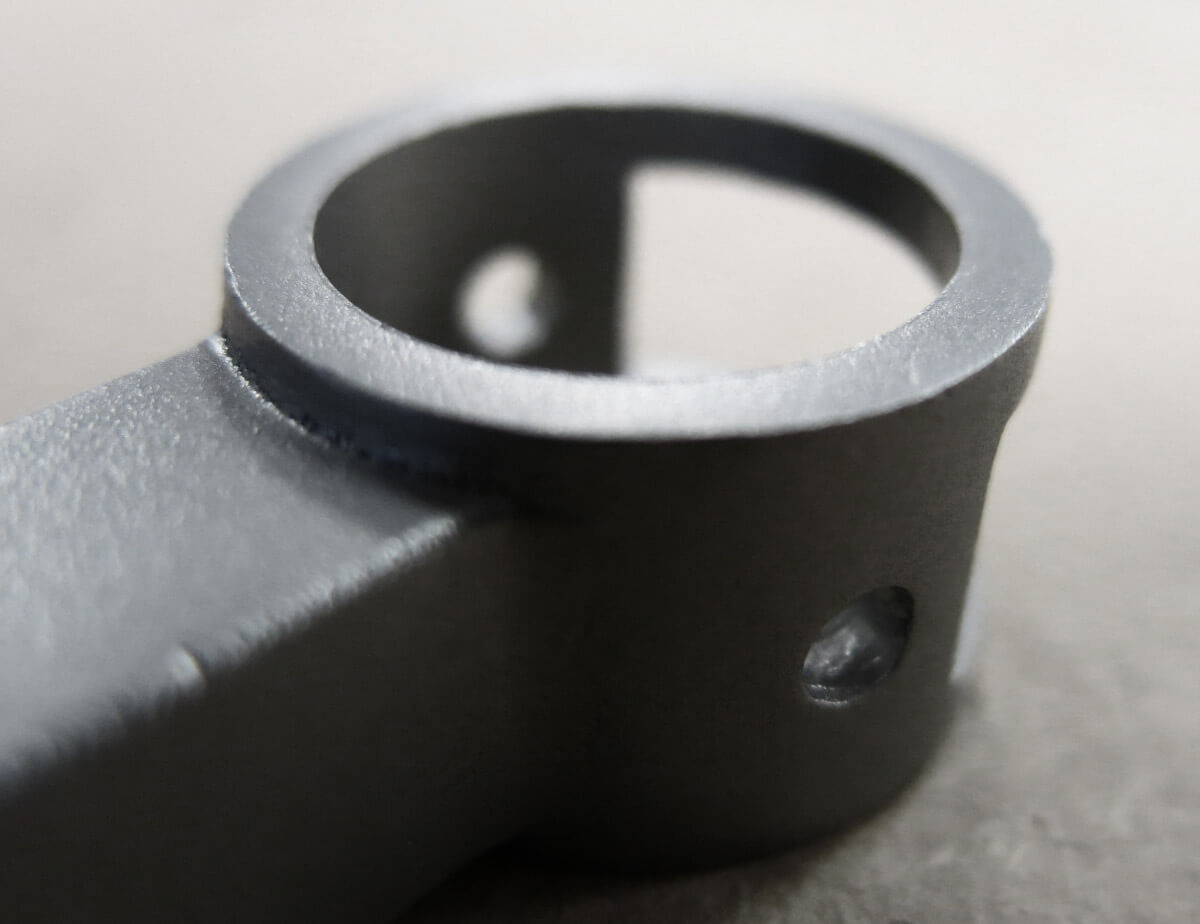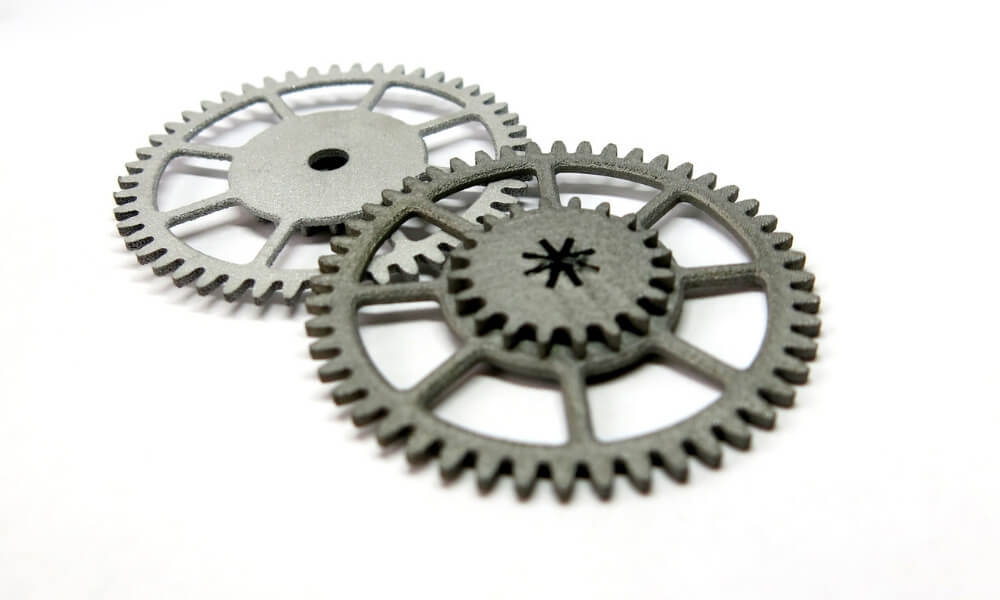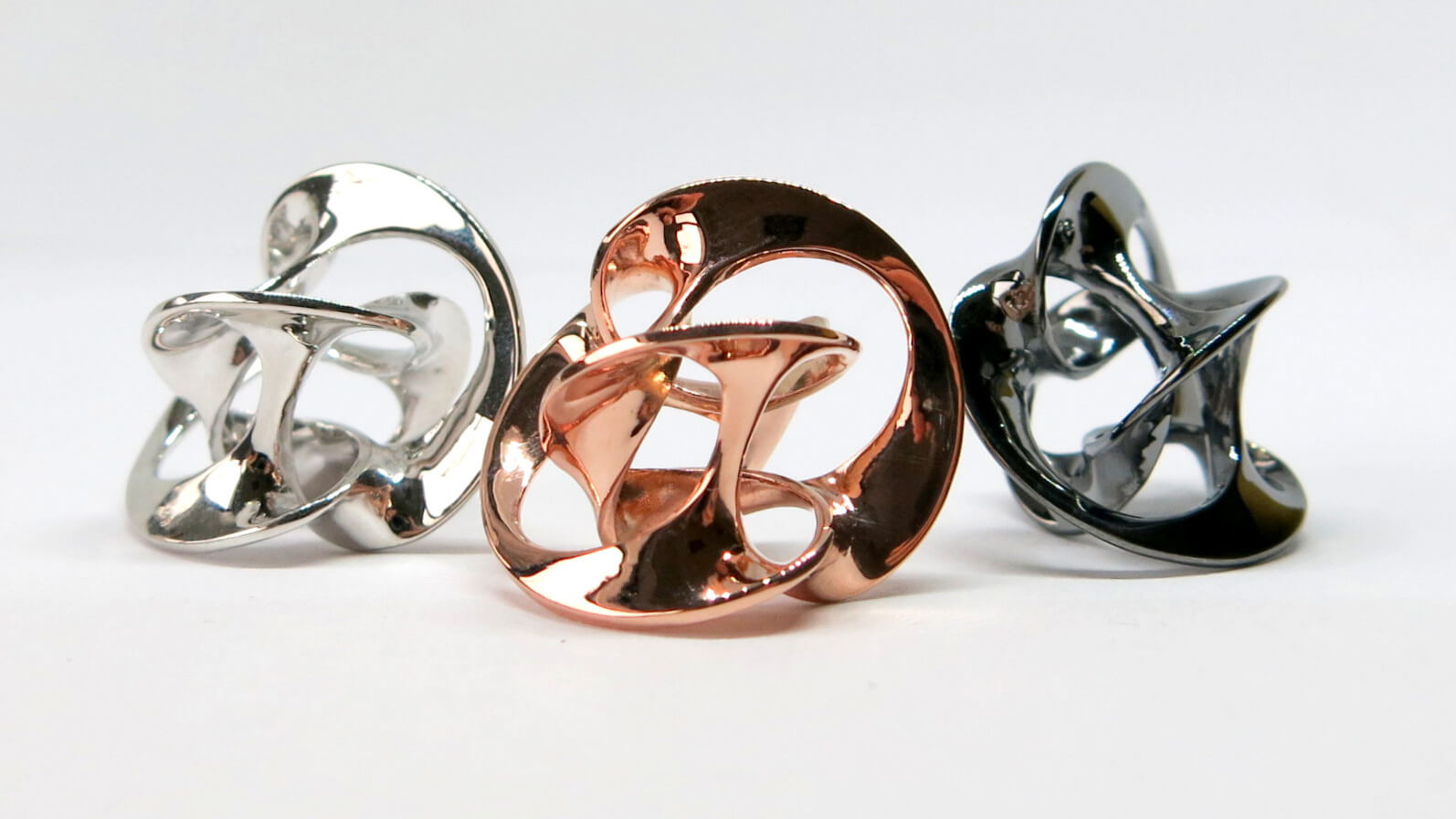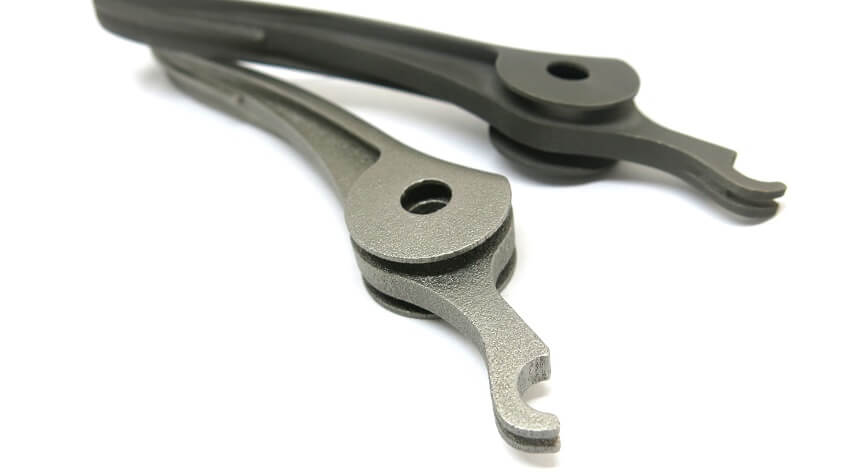How to implement metal 3D printing for your business?
Posted By Kat Plewa on Jul 3, 2019 | 0 comments
Metal 3D printing is widely used in industries such as automotive, aerospace and jewelry. Your business can also start benefiting from it! Why should you consider metal 3D printing for your production? What advantages will it give you?
Today we will take a very close look at metal 3D printing technologies, we will give you an overview of metal 3D printing materials and discuss the many benefits Additive Manufacturing offers to different industries. Are you ready to become a metal 3D printing expert?
Metal 3D printing technologies
To start implementing any Additive Manufacturing technologies you need to understand how they work. Then, you can pick which one will suit your production requirements best. In this chapter, we will focus on 4 metal 3D printing technologies, so make sure you stay with us till the end!
DMLS
Direct Metal Laser Sintering technology uses a metal 3D printer to produce your parts layer by layer with metal powder. The temperature needed to fuse the metal powder is between 1510°C to 1600°C. This process is highly beneficial for functional prototyping and low-volume production.
SLM
Selective Laser Melting differs from DMLS by the power of the laser. When it comes to SLM technologies, the powder metal is fully melted and therefore the cooling process is longer. This technology is better suited for pure metals such as Titanium.
Binder Jetting
This 3D printing method fuses the metal powder by applying a binding agent, layer after layer. Then, each layer is lightly cured in order to solidify the material. With Binder Jetting, when the 3D printing job is done, the whole build box is moved into a curing oven.
Lost-Wax Casting
Lost-Wax Casting combines both traditional ways to manufacture and 3D printing. First, a 3D model is 3D printed with wax. Thanks to Additive Manufacturing technologies, the model will be the perfect master model. Then, a mold is produced with that model and the wax is pushed out through a tree-like structure and replaced with metal. Lost-Wax Casting is especially interesting for the production of small objects in many quantities, such as jewelry. To learn more discover our design guidelines for Lost-Wax Casting 3D printing.
Metal 3D printing materials
Aluminum AlSiMg0.6
Aluminum parts are produced with Selective Laser Melting technology. This metal is a composite of aluminum (90%), silicone (7%) and magnesium (0.6%). It has good mechanical properties and can be exposed to high voltages. The advantages of Aluminium is durability and lightweight.
Stainless Steel 316L
This material is used for DMLS 3D printing. It is a mix of iron (66-70%), chrome (16-18%), nickel (11-14%) and molybdenum (2-3%). Its outstanding properties are strong resistance against corrosion, high ductility, and smoothness. Thanks to that, Stainless Steel 316L is widely used in the medical, automotive and aerospace industry.
Titanium 6Al-4V
Titanium parts are also manufactured through the DMLS process. It is composed of titanium (88-90%), aluminum (5.5-6.5%) and vanadium (3.5-4.5%). This 3D printing metal has an excellent melting point (1660°C), low toxicity, great mechanical properties and is lightweight. Titanium is the true 3D printing material for tough jobs.
Steel/ Bronze 420SS/BR
If you decide to use this 3D printing metal, you need to know that it’s fine stainless steel (60%), manufactured through Binder Jetting technology, and later enriched with bronze (40%) to achieve additional strength and resistance. Steel/ Bronze 420SS/BR has fairly good mechanical properties, however, it can not withstand as much stress as parts produced through the DMLS process. It is recommended for more decorative objects.
Stainless Steel 360
It’s important not to mistake this Stainless Steel 360 (Binder Jetting) with Stainless Steel 360L (DMLS). As those materials are used for different 3D printing technologies. This metal is more precise and better suited to produce small, high-quality objects. Stainless Steel 360 presents high resistance against corrosion and high temperature, which makes it a good candidate for manufacturing tooling, molds and to be used in the consumer goods industry.
Precious metals
For decorative purposes, there is also a selection of 3 precious metals: Sterling Silver, Brass and Bronze. They are all used for Lost-Wax Casting. They all will produce high-quality and complex geometries, which finds applications mostly in jewelry businesses. Sterling Silver and Brass also offers platings, which allows for more options when it comes to the looks of your projects.
Why should you choose metal 3D printing?
There are quite a few industries that benefit the most when it comes to 3D printing production. Which advantages of metal 3D printing are the most important for them and how did they implement innovative solutions? Let’s have a closer look!
Aerospace industry
In this field, the biggest problem is the weight of the parts. Either building an airplane or a rocket, the lightweight of parts is crucial. Why? Because even just lifting those vehicles from the ground requires an abnormous amount of energy and fuel to produce it. Therefore, the lighter the plane or rocket, the better.
Lightweight of 3D printed parts can be achieved in different ways. One is hollowing the parts which are often impossible to achieve with the traditional manufacturing process.
Another one is filling the parts with lattices, which keeps them strong, but lightweight.
Another quality which Additive Manufacturing gives is complex geometries that are essential in this industry and allow the engineers to develop absolutely new design solutions, such as 3D printed brackets by Airbus.
Last advantage, however, it really applies to any industry, is the ultimate personalization. Metal 3D printing allows you to design customized tools, jigs, and fixtures. Some parts have to be unique, dedicated just to fix a specific problem. This is where Additive Manufacturing wins over traditional production methods giving you the opportunity to design parts that were impossible before.
Automotive industry
The automotive industry also needs lightweight parts and new design solutions, but what’s also important here is fast production. Time is money. Additive Manufacturing is an asset to this industry on all production stages.
It can already improve the functional prototyping process by giving the engineering new prototypes in no time. It is also fast because when a new feature needs to be tested, all there has to be done is to add it to the 3D model and send it straight for production.
When the final part is developed, 3D printing is still very beneficial for the automotive industry. It provides the vehicles with very strong, resistant and fully functional car parts, such as breaks produced by Ford or 3D printed tires.
Jewelry
3D printing in many industries, not only jewelry, offers less material waste which brings the production costs down. As it is producing the parts layer by layer, it only fusses the amount of material which is needed to produce the part. 3D printing is also great to produce molds, thanks to the perfect master model.
The jewelry industry is reaching a new level of complexity and detail thanks to Additive Manufacturing. It offers to the jewelry makers totally new design solutions and beauty, as well as fast production at the best quality. From bracelets and necklaces to handbags, Additive Manufacturing allows the 3D designers to reveal a new was of thinking about jewelry.
How to design for metal 3D printing?
Now that you know why should you consider metal 3D printing for your production, you know the technologies and materials, we should talk about how to implement Additive Manufacturing.
First of all, you need a 3D model. They can be downloaded from the internet, however, you probably need something custom made. Therefore you need to contact an online 3D printing service or learn 3D modeling. We explained what’s the difference between CAD and 3D modeling software and also we’ve got for you to check out the easiest 3D modeling software and Top 25 of free CAD software.
Once you have the model, it’s important to understand what is the best 3D printing file format, the importance of its resolution and which tools you can repair your model if such need occurs. We would advise you to use STL files as they are the most common.
Once your 3D file is ready, you have solutions to consider. You can invest in the best industrial metal 3D printer or use an online 3D printing service which will enable for you affordable metal 3D printing. The latter one is a comfortable and secure way without your company bankrupting by buying a metal 3D printer and paying an expert to run it.
Using an online 3D printing service is as simple as uploading your 3D file to a website and getting an instant quote. If you’re planning to produce whole batches, it might be beneficial for you to contact the sales department to discuss your production options.
Did you enjoy this article? Don’t forget to subscribe to our Newsletter and follow us on Facebook!


 Connect with Google
Connect with Google Connect with Facebook
Connect with Facebook